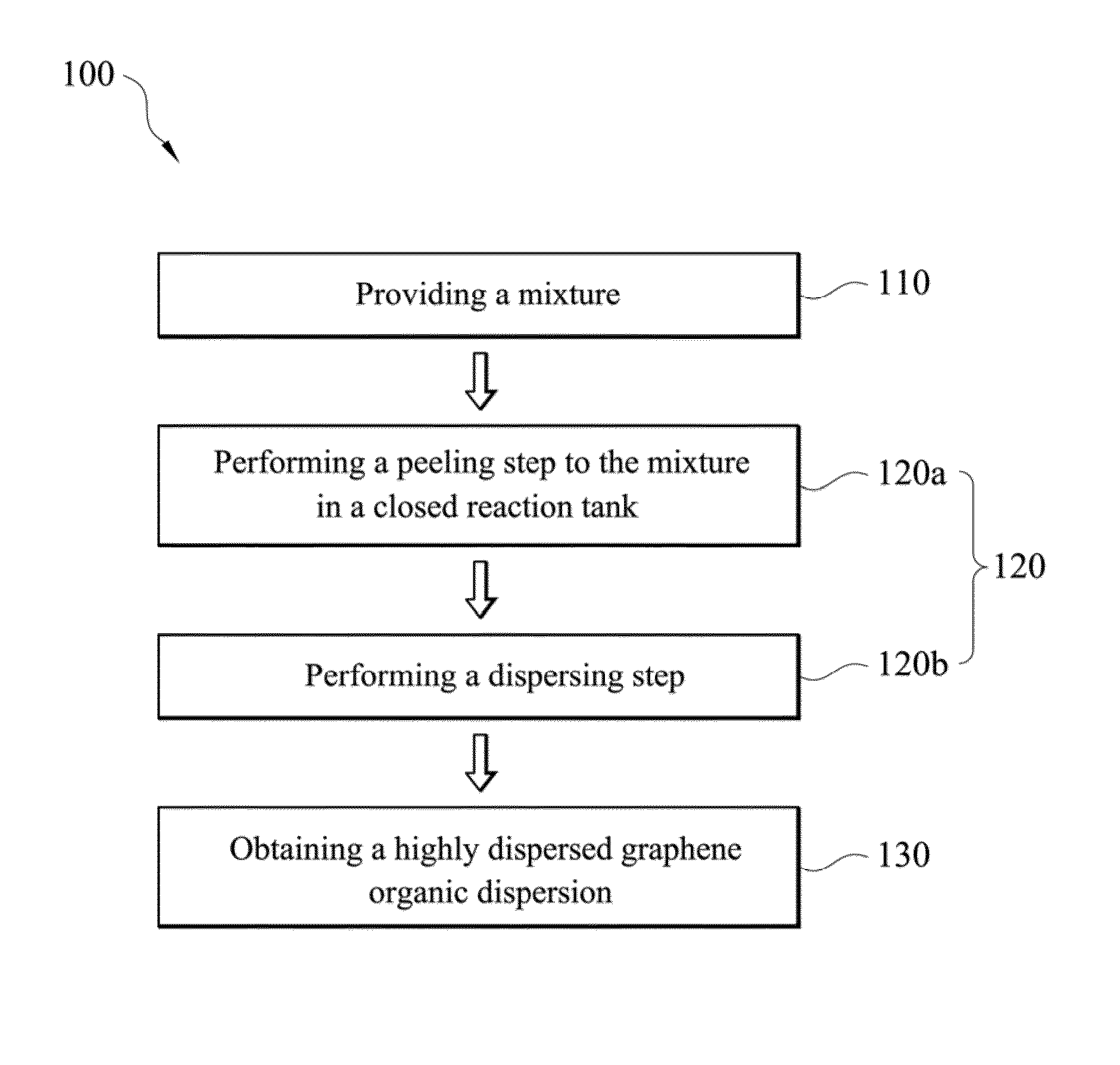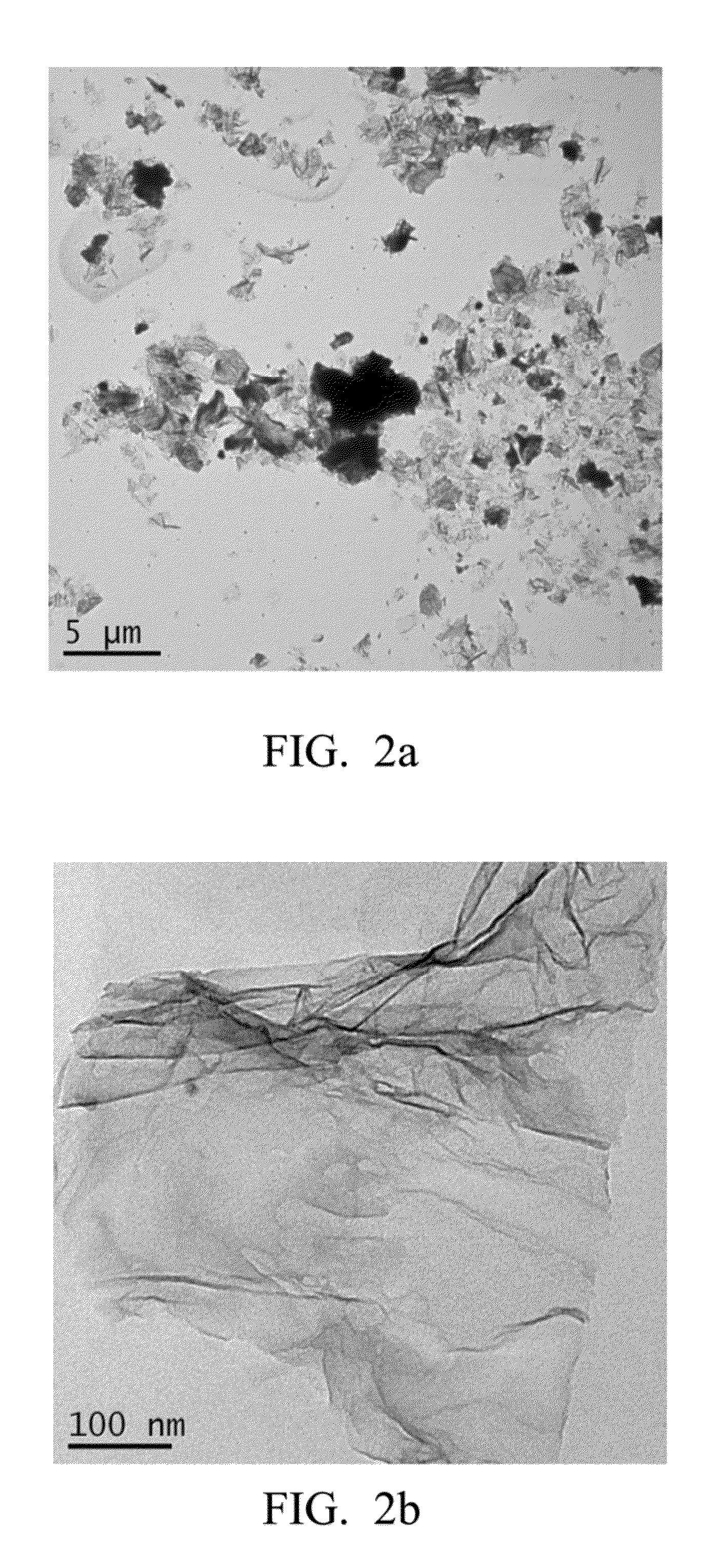Method of producing highly dispersed graphene organic dispersion and application thereof
a graphene organic dispersion and high-dispersion technology, applied in the direction of graphene, single-layer graphene, graphene, etc., can solve the problems of lowering the quality of graphene, low quality of graphene, and high cost of method (3), so as to achieve better ageing stability
- Summary
- Abstract
- Description
- Claims
- Application Information
AI Technical Summary
Benefits of technology
Problems solved by technology
Method used
Image
Examples
example 1
[0057]A mixture was firstly provided. The mixture included a graphene material and an organic solvent, and a solids content of the mixture was 0.1 mg / mi. The organic solvent was NMP (a volume percentage of the NMP and toluene was 100:0). Then, a peeling process was performed to the mixture, and a first temperature of the peeling process was higher than a boiling point of the organic solvent for 20° C. After the peeling process was performed for 20 minutes, the temperature was decreased to 10° C., and a dispersion step was performed by a homogenizer. After the dispersion step was performed for 10 minutes, the highly dispersed graphene organic dispersion was obtained. The resulted highly dispersed graphene organic dispersion was evaluated according to the following evaluation methods, and the results of the contents of the single-layered graphene and the light-shading rate were listed in Table 1. The evaluation method of the light-shading rate and the ratio of the single-layered graph...
examples 2 to 7
[0058]Examples 2 to 7 were practiced with the same method as in Example 1 by using various kinds or amounts of the components for the highly dispersed graphene organic dispersion. The formulations and detection results thereof were listed in Table 1 rather than focusing or mentioning them in details.
Evaluation Methods
1. Light-Shading Rate
[0059]A transmittance (T1) of the polyethylene terephthalate (PET) film was firstly measured. Then, the highly dispersed graphene organic dispersions of Examples 1 to 7 were respectively formed on a surface of the PET film by a spin-coating process, thereby obtaining the graphene material. The spin-coating process was performed once. And then, a transmittance (T2) was measured by the same method, and the light-shading rate of the graphene layer of the graphene material was calculated according to the following formula (I):
[0060]Light-ShadingRateofGrapheneLayers(%)=T1-T2T2×100%(I)
[0061]A microstructure of the highly dis...
PUM
| Property | Measurement | Unit |
|---|---|---|
| boiling point | aaaaa | aaaaa |
| temperature | aaaaa | aaaaa |
| boiling point | aaaaa | aaaaa |
Abstract
Description
Claims
Application Information
 Login to View More
Login to View More - R&D
- Intellectual Property
- Life Sciences
- Materials
- Tech Scout
- Unparalleled Data Quality
- Higher Quality Content
- 60% Fewer Hallucinations
Browse by: Latest US Patents, China's latest patents, Technical Efficacy Thesaurus, Application Domain, Technology Topic, Popular Technical Reports.
© 2025 PatSnap. All rights reserved.Legal|Privacy policy|Modern Slavery Act Transparency Statement|Sitemap|About US| Contact US: help@patsnap.com



